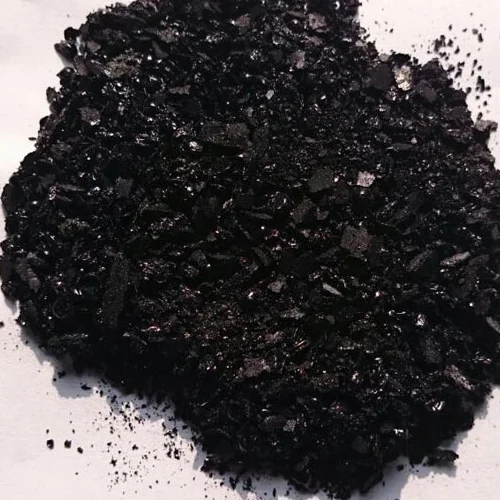Exploring the Rich Tradition of Indigo Blue Fabric Dye in China
The Allure of China Indigo Blue Fabric Dye
Indigo blue, a color synonymous with deep tradition and vibrant culture, holds a special place in the world of textile dyeing, particularly in China. This rich, enduring hue has fascinated generations and continues to influence art and fashion across the globe. The story of China’s indigo blue fabric dye is a tale woven into the very fabric of its history, craftsmanship, and cultural significance.
A Historical Perspective
The use of indigo as a dye dates back thousands of years. Evidence of indigo dyeing has been found in ancient Chinese tombs, demonstrating its value and widespread use in early Chinese society. The cultivation of indigo plants, primarily *Indigofera tinctoria*, was widespread in different regions of the country. The dye was extracted through a fermentation process called “vat dyeing,” which required skill and patience. The result was a vivid blue that caught the attention of not only locals but also traders from afar.
During the Ming and Qing Dynasties, indigo blue became a symbol of wealth and status. Fine textiles dyed in this enchanting blue were highly sought after, not just within China but also along the Silk Road, where they were traded for spices, silk, and precious metals. The incredible journey of indigo fabric contributed to the rich tapestry of cultural exchanges, making it an integral part of both Chinese heritage and global trade.
The Art of Indigo Dyeing
The process of dyeing fabric with indigo is a painstaking art form that has been mastered by artisans over centuries. The first step involves extracting the dye from indigo leaves, a process that often requires soaking the leaves in water and allowing them to ferment. This fermentation yields a blue pigment that can be used to dye fabrics.
The most traditional method of dyeing is known as shibori, a Japanese resist dyeing technique that has also influenced Chinese practices. In shibori, patterns are created by folding, tying, or stitching the fabric, preventing the dye from penetrating certain areas. This technique produces stunning designs that are visually striking and unique, adding to the fabric's aesthetic value.
The artistry of indigo dyeing is not just in the color but also in the craftsmanship involved. Local artisans often add their own interpretations and regional influences to their techniques, resulting in a variety of styles and patterns. This rich diversity reflects the cultural significance of indigo dyeing throughout China.
china indigo blue fabric dye

Cultural Significance
Indigo blue is more than merely a color; it embodies a wide array of cultural meanings. In many parts of China, it symbolizes protection, healing, and prosperity. In traditional Chinese culture, clothing dyed in indigo was often worn by farmers and laborers, reflecting their connection to nature and the earth. The color was believed to repel evil spirits and bring good fortune.
Moreover, the indigo dyeing tradition has fostered community ties. Many villages in regions like Jiangxi and Zhejiang have maintained indigo dyeing as a communal activity. Festivals celebrating this craft bring people together to share knowledge, stories, and skills, ensuring that this ancient art form continues to thrive in the modern world.
Modern Applications and Sustainability
In contemporary society, the resurgence of interest in sustainable practices has breathed new life into the indigo dyeing industry. As fashion trends increasingly lean towards eco-friendly options, indigo has been hailed as a natural dye that aligns with sustainable practices. Designers and consumers alike are returning to traditional methods to produce ethically sourced and environmentally friendly fabrics.
Fashion brands are now embracing indigo-dyed textiles, showcasing them in collections that reflect a blend of tradition and modernity. This fusion of heritage and innovation not only revives interest in this ancient practice but also celebrates the artistry of indigo dyeing for a new generation.
Conclusion
The narrative of China indigo blue fabric dye is a captivating blend of history, artistry, and cultural significance. From its ancient roots in Chinese society to its modern-day applications, indigo dye remains an enduring symbol of beauty, craft, and sustainability. As we continue to appreciate and embrace this timeless hue, we honor the generations of artisans who have dedicated their lives to mastering the art of indigo dyeing, ensuring that this beautiful tradition persists as part of our shared cultural heritage.
-
The Timeless Art of Denim Indigo Dye
NewsJul.01,2025
-
The Rise of Sulfur Dyed Denim
NewsJul.01,2025
-
The Rich Revival of the Best Indigo Dye
NewsJul.01,2025
-
The Enduring Strength of Sulphur Black
NewsJul.01,2025
-
The Ancient Art of Chinese Indigo Dye
NewsJul.01,2025
-
Industry Power of Indigo
NewsJul.01,2025
-
Black Sulfur is Leading the Next Wave
NewsJul.01,2025

Sulphur Black
1.Name: sulphur black; Sulfur Black; Sulphur Black 1;
2.Structure formula:
3.Molecule formula: C6H4N2O5
4.CAS No.: 1326-82-5
5.HS code: 32041911
6.Product specification:Appearance:black phosphorus flakes; black liquid

Bromo Indigo; Vat Bromo-Indigo; C.I.Vat Blue 5
1.Name: Bromo indigo; Vat bromo-indigo; C.I.Vat blue 5;
2.Structure formula:
3.Molecule formula: C16H6Br4N2O2
4.CAS No.: 2475-31-2
5.HS code: 3204151000 6.Major usage and instruction: Be mainly used to dye cotton fabrics.

Indigo Blue Vat Blue
1.Name: indigo blue,vat blue 1,
2.Structure formula:
3.Molecule formula: C16H10N2O2
4.. CAS No.: 482-89-3
5.Molecule weight: 262.62
6.HS code: 3204151000
7.Major usage and instruction: Be mainly used to dye cotton fabrics.

